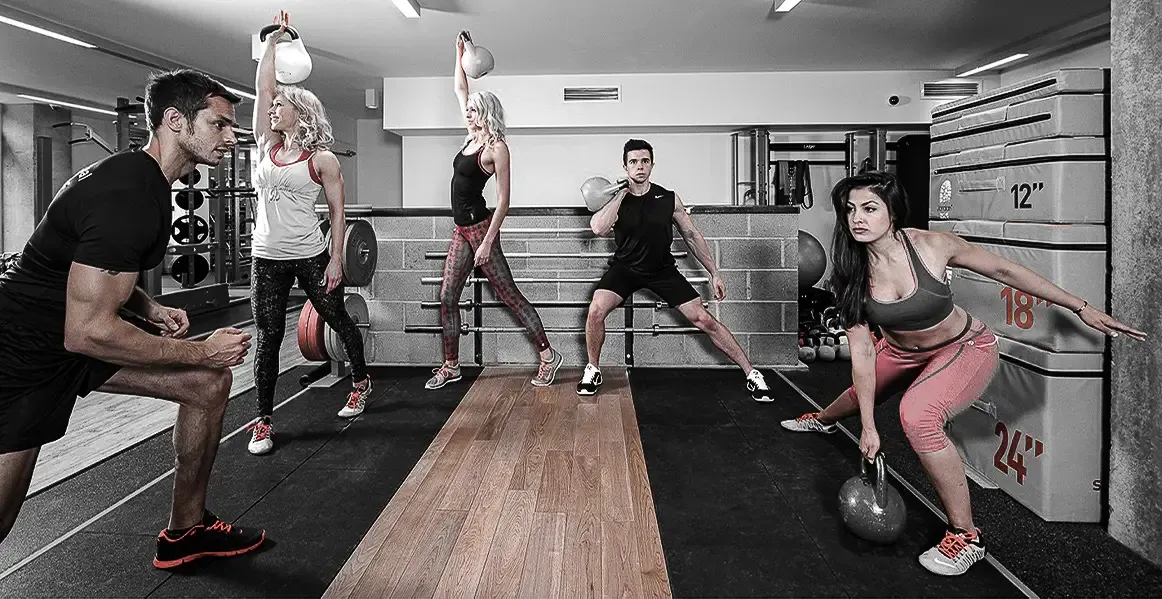With pro-choreography, it is possible to modify the exercises to suit all participant skill levels. With this in mind, there are five key considerations when teaching jump squats:-
- Focus on form and technique – Squatting will no doubt be very familiar to regular pump fx attendees. Hopefully they will have mastered the correct form and technique already. If you have a new exerciser in class, make sure their form and technique is spot on before progressing to a more advanced movement pattern. For the first few weeks in a release period, rather than doing the jump squat, maybe consider a regular squat using this to reinforce the correct form and technique. Use these introductory weeks wisely to prepare the group for the jump squat which will follow later in the programme.
- Progress to a squat with full extension – Jump squats require a lot of core control in order to stabilise the spine during the take-off and landing phases. In pump fx V15.2 we introduced the squat with full extension, this is where we extend up onto our toes at the top of the squat but stay in contact with the floor. The body is in an unstable position at the top of the full extension and therefore requires a greater level of core stability. The full extension therefore teaches the explosiveness required for the jump squat while training the stabilisation of the core.
- Engage the Latissimus Dorsi to increase core stability – Teach the class to pull the bar down onto the Trapezius in order to engage the Latissimus Dorsi (Lats). As these have their origin on the inferior angle of the Scapula and attach to the Thoracolumbar Fascia which in turn inserts onto the spinous processes of the lower Thoracic and Lumbar vertebrae, pulling the bar down and engaging the Lats will help to increase the stability of the spine/core.
- Reduce the load – The forces transmitted through the body during plyometrics is much greater than regular squat movement patterns. Therefore the weight used for jump squats should be much less than that which is used in a regular squat track. For new exercisers, offer the option of doing jump squats with no plates on the bar the first time and then gradually adding weight over the release period. If a client chooses not to use any weight, still recommend they use the bar so they can practice engaging the core as mentioned above.
- Jump Squats are not for everyone – Remember not every exercise is suitable for every client. We need to consider each client as an individual and offer modifications and alternatives where required. For some clients, jump squats may just be an exercise that is not for them or maybe something they will work towards in future releases.
The ability to offer alternatives and modifications when teaching a large group is a key skill of instructors. The following steps will help in the delivery of a multi-level workout: –
- Demonstrate the simple version of the exercise in the first cycle and remind more regular clients they can progress straight to the more challenging version if they wish.
- Introduce the more challenging variation in the second cycle by first doing the simple version for two repetitions and then showing the more challenging version. Then return to the simple version so your new clients follow you.
- During the third cycle, start with the simple version and then once again, demonstrate the more challenging version. Alternate between the two every couple of repetitions reinforcing that clients may choose whichever option is most suitable for them.
Due to the speed of movement and the force placed on the body, plyometrics have a higher risk of injury. Correct preparation and good instruction is therefore key to ensuring a safe and effective workout for everyone. Keeping these 5 points in mind when teaching your pump fx workout will make sure your clients achieve the best results in the shortest possible time.

